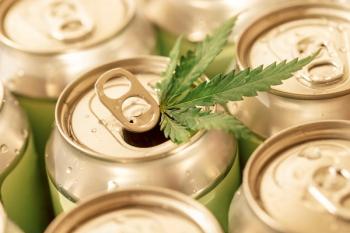
Cannabis Science and Technology
- September 2021
- Volume 4
- Issue 7
Cannabis and Hemp Tableting Challenges
A closer look at the fundamental studies of tablet formation that are critical processes to ensure successful manufacturing of THC and CBD tablet dosage forms.
Developing a tablet dosage form for the cannabis or hemp industry offers many advantages for consumer compliance and manufacturers alike. The consumer can now administer a known concentrated amount of tetrahydrocannabinol (THC) or cannabidiol (CBD) in different tablet forms including a lozenge with flavors like a mint candy, orally disintegrating tablets (ODT, orally disintegrating in less than 30 seconds), a bilayer tablet with one layer as immediate release and the other with extended release, an effervescent form to disintegrate in water as a flavored beverage, and many more delivery options. A tablet form also offers elegant shapes and sizes for product branding, ailment identification, concentration amount, and more. Manufacturers benefit from the high output rates from tablet presses up to millions per hour, if developed properly. The process of developing a THC or CBD tablet form is the same as developing a pharmaceutical tablet with an active pharmaceutical ingredient (API). The API (THC or CBD concentration) must be uniform within tolerance for every single tablet manufactured. This development process is both a science and art form. The tablet development process requires the appropriate selection of excipients. The API (THC or CBD) amount is only a fraction of the formula and the excipients are inactive functional ingredients that provide the bulking agent, binding agent, dissolution, flow agents, powdered lubricants, flavors, colors, and more. Furthermore, THC and CBD are typically in a distillate form and require loading to a carrier material. All of these materials must be mixed into a homogeneous manner with acceptable particle size distribution and high compactibility on the tablet press. A series of experiments are carried out in the laboratory including powder micromeritics, compaction profile studies to understand the mechanical robustness, and its failure points. These fundamental studies are critical processes to ensure successful manufacturing of THC and CBD tablet dosage forms.
Tablets comprise the largest group of delivery systems for the pharmaceutical and dietary supplement industries. This technology offers an opportunity to the cannabis industry to allow orally administering a consistent and defined amount of cannabidiol (CBD) or tetrahydrocannabinol (THC). Common types of tablets include immediate release, modified release, orally disintegrating, effervescent, chewable, lozenges, and bilayer. Advantages include ease of accurate dosing if developed properly, physical and chemical stability, elegant appearance for distinctive identification, competitive production costs, and a high level of patient acceptance and compliance. Tablets are a complex drug delivery system, and their design, development, and manufacture should not be underestimated or significant problems will arise at some stage of the process. There is no doubt that many tableting problems occur because of the failure to fully understand the properties of the raw materials and how they behave on the tablet press.
Discussion
There are three main processes used in the tablet manufacturing industry for developing high quality tablet forms: Direct compression (DC), dry granulation or roller compaction (RC), and wet granulation (WG) which can be high shear, low shear, and fluid bed technologies. RC and WG processes are typically used to improve the powdered formula’s flowability by increasing its particle size and density. Flowability is a critical attribute for tableting and high-speed tablet presses require acceptable flow properties to uniformly fill the die cavity. If the proper excipients are chosen and the blending process is properly followed, then granulation can be omitted from the process. This is true if the cannabinoid is already in powder form (that is, isolate), but if the cannabinoid is in oil or crude form then loading the oil on a carrier is needed; a common way to load the oil is through a low shear process. The carrier material must be able to hold a significant amount of oil and many carriers are available including maltodextrin, silica, and phosphates. Saturating the carrier with oil can impact the flowability and compactability, so a series of laboratory tests can ensure the proper amount for successful tableting.
Carrier Evaluation
In the comparative study described here, three common oil loading material classes were used with CBD distillate containing 89.03% w/w CBD concentration. A 10% drug load at 89.03% CBD potency was 11.23% w/w distillate loading and 88.77% w/w carrier material were mixed using a low shear mixing process. The carrier materials included maltodextrin, tri-calcium phosphate, and silica (see Table I). The final tablet formulation will then include Mannitol (see Table II), which is the bulking agent, and a vegetable-based magnesium stearate was used for the lubricant. The carrier material or intermediate blend (IB) and the Mannitol were then screened with a #30mesh sieve and blended in a tumble mixer for 3 min. Finally, the magnesium stearate was screened using a #40mesh sieve and blended with the formula in a tumble mixer for an additional 2 min. Screening the raw materials is a critical process to break up any agglomerates and ensure a more homogeneous blend. This will ultimately improve powder flow into the die cavity and help provide consistent tablet weights and content uniformity. Also, the magnesium stearate is the powdered lubricant that will reduce the force required to eject the tablet after compression. Overbending or an excessive amount of lubricant is a common issue that can lead to reduced powder flow properties, lower tablet strengths, tablet capping (which is a fracture along the horizontal plane of the tablet), and surprisingly, punch face sticking. Adding more lubricant to the formulation may initially help reduce sticking but an excessive amount, sometimes higher than 1.0% w/w or over blending will weaken the particle-to-particle bonding under compaction which can cause the particles to adhere to the punch faces instead.
Before compacting these formulas on the tablet press it is prudent to evaluate the micromeritics. Micromeritics is the science and technology of small particles. In the tableting arena, we focus on particle size and size distribution, particle shape, volume and surface area, density, flow properties, and porosity. At the very least particle size, distribution, density, and flow should be evaluated before tableting.
Particle Size Distribution
Particle size distribution can be measured by several methods including sieving, microscopy, sedimentation techniques, optical and electrical sizing zone method, and laser light scattering techniques. We will focus on a simple method called sieving where we used an atomic sonic sieve sifter at 10 min of run time. Six sieves were stacked on top of each other where each lower sieve has a smaller aperture size than that of the sieve above it. Sieves can be referred to as their aperture size in micrometers (µm) or by their mesh size which is the number of wires per linear inch. The test we used for this experiment utilizes 850, 600, 250, 150, 125, and 75 µm sieves. The sample material is poured onto the 850 µm screen, and the sieve sifter provides cycles of vibration and pulsing to separate the particles. Any material that passes through a 75 µm screen is considered fine materials. Table III depicts the percentage of materials that were separated by the screen sizes.
The maltodextrin blend provided the best particle distribution results with more than 66% of the blend held on the 250 µm sieve and less than 9% under the 75 µm sieve. We look for a unimodal curve and less than 15% fine materials. A bimodal curve will show two peaks, a peak with large particle sizes and a peak with small particles. This causes an issue with possible segregation, high tablet weight variations, and potential content uniformity issues. An extreme example of this is like trying to blend marbles and sand and when the tablet press starts up the vibration caused from the machine will separate the marbles from the sand and the resulting die fill from the tablet press will not be uniform
(see Figures 1 and 2).
The silica and tri-calcium phosphate blends did provide a unimodal distribution curve, but an excessive number of fines were found for both blends. The excessive number of fines could cause powder flow issues and could lead to tablet robustness issues and potential sticking to the tablet press tooling punch faces. As mentioned above, less than 15% fines is desirable for tableting. A small number of fines will allow filling of the air voids between particles, but an excessive amount causes inter-particulate bonding issues during the compaction event which is needed to produce robust tablets for shipping and handling during manufacturing and to the consumer.
Compressibility and Flow Characterization
Measuring the formula’s bulk and tapped density is another test to evaluate the micromeritics. The bulk density is the apparent powder density under defined conditions and the tapped density is the apparent density obtained under stated conditions of tapping. The bulk density is valuable because this will allow the formulator to understand if the required mass of the final tablet will fit into the dosing depth fill that is available on the tablet press (see Equation 1). The tapped density as compared to the bulk density will allow the evaluation of the compressibility or the ability to reduce in volume, which classifies the flowability characteristics.
The bulk density of a powder is the ratio of the mass of an untapped powder sample and its volume including the contribution of the interparticulate void volume. Hence, the bulk density depends on both the density of the powder particles and the spatial arrangement of particles in the powder bed (see Equation 2).
The inter-particulate interactions influencing the bulking properties of a powder are also the interactions that interfere with the powder flow. A comparison of the bulk and tapped densities can give a measure of the relative importance of these interactions in a given powder. The compressibility index and Hausner ratio are common ways to evaluate flow characteristics (see Equations 3 and 4 as well as Table IV).
Table V depicts the three carrier formulations with their bulk and tapped densities, Hausner ratio, and compressibility index. The maltodextrin blend resulted as “passable” flow, the tri-calcium phosphate blend also resulted as “passable,” and the silica blend resulted as “poor” flow. Formulas that are characterized as “poor” still can produce quality tablets, but these formulas typically have more challenges during manufacturing and production rates are reduced to compensate for the poor flow characteristics.
Moisture Content
Moisture content analysis is another important factor to consider for successful tableting. Excessive moisture can adversely impact the physical properties of the tablet, which in turn affect the chemical reactivity and binding properties that define the product’s shelf-life. In some cases, the presence of moisture effects the consistency and stability of the tablets. Too much moisture will cause agglomeration of the powder particles and will affect the flowability. Too little moisture can cause binding issues resulting in a poorly compacted tablet with very low tablet strength. Generally speaking, less than 1% moisture can be too low causing very low tablet strengths and greater than 4% is too moist causing flow issues which turns into weight consistency and content uniformity issues. Effervescent tablets are hydroscopic in nature and tend to absorb the environmental moisture from the air. Hydroscopic materials must be processed in a controlled environment with a recommended relative humidity not to exceed 40%. The moisture content for all three formulas were found to be acceptable. The maltodextrin blend resulted in 4.17%; the tri-calcium phosphate blend resulted in 1.25%; and the silica blend resulted in 3.00%.
Tabletability
The compaction study described below was performed on the NP-RD10a single station tablet press and AIM data acquisition system. Whether your machine is a single station or rotary tablet press the powdered materials still undergoes compressive forces in a confined space, causing a reduction in volume. At first, the low applied pressure cases particles to rearrange and pack more closely, and porosity thus decreases. As pressure increases, the dimensions of the particles change. They can either fracture into smaller discrete particles (fragmentation) or they undergo a temporary (elastic) or permanent (plastic) deformation into new shapes. At higher pressures, the particles that fracture could further rearrange and undergo additional deformation.
Materials that undergo fragmentation are typically less sensitive to weakening when powdered lubricants (that is, magnesium stearate) are added. As mentioned earlier, lubricants commonly inhibit bonding between particles, but when the particles fragment, new and clean surfaces are exposed, strengthening the bond. Particles that fragment are also less sensitive to the speed of the compression event. Materials that undergo plastic deformation are known for creating high-strength compacts at relatively low applied pressures, which stems from the greater number of inter-particulate contact points during the deformation process. That strength, however, may decrease when lubricants are added and when the rate of compression increases. Elastic deformation refers to a particle’s partial or full recovery to its original shape after compression loading ceases. Time-dependent elastic recovery is called viscoelasticity, and the factors that influence compression time are press speed, turret velocity, compression roller sizes, and punch head dimensions.
To conduct a compression study, select the tablet’s target weight and keep it fixed. We selected 200 mg for each blend to compress. Next, we collected samples of tablets made at different compaction forces (low to high) and measure their weight, thickness, and breaking force (also called hardness). Other post compaction measurements include friability, disintegration, and dissolution. Once this is collected you can then plot each attribute or characteristic as a function of the applied compaction pressure. Figure 3 depicts a tabletability profile that is the tablet tensile strength as a function of the applied compaction pressure. This is a normalized way of evaluating the tablet robustness independent of its mass and size. Smaller and lighter weight tablets can be made at early development and if the size and mass changes the tabletability profile does not change. This adds many advantages including material sparing process to save investment costs, comparing tablet robustness with tablets of different sizes and weights, and a defined process to run profiles even when you know little to nothing about the formulation.
Compaction pressure can be calculated from the applied force and the cross-sectional area of the punch face (see Equation 5). This allows you to compare the loading of different size tablets.
Tensile strength, which can be calculated from the breaking force and tablet dimensions, allows you to compare the mechanical strength of different size tablets. The tablets for the experiments summarized here were made using 10 mm round flat face punches and the values were calculated using the Fell-Newton equation (see Equation 6).
In this example, we compressed all three samples at 100, 150, 200, 250, and 300 Mega Pascals (MPa). Sample tablets were collected at each pressure for an average tablet weight, thickness, and breaking force. We chose these pressures as they are the most common applied loads for pharmaceutical, dietary supplements, and candy. Typically, 100–200 MPa is used for pharmaceutical products whereas dietary supplements and candy are typically compressed between 200–300 MPa. When drug loads are low for pharmaceutical products then the compactible excipients are a high percentage of the formula, which will require a low compaction pressure to produce a robust tablet. Dietary supplements can have more than 10 active ingredients in the formula, and they usually are not very compactable, which requires higher compaction pressures. Candy tablets can range in pressure but when it is developed as a lozenge to suck on and slowly erode in the mouth, these tablets are very hard from the high compaction pressures.
As the compaction pressure increases, we expect the tablet strength to also increase until it reaches it’s maximum compactability. A robust tablet range is 1.5–2.0 MPa tensile strength. This strength provides a robust tablet that can survive shipping and handling. If your product is an effervescent or orally disintegrating tablet, then a tensile strength of less than 1.0 MPa is appropriate and in some cases less than 0.5 MPa. This is due to the fast disintegration times required from these products.
In Figure 3 all three formulas increased in tablet strength with increased compaction pressure even up to 300 MPa of compaction pressure. This is encouraging as some materials will reach its maximum compactability before 300 MPa and this can cause issues at high-speed manufacturing. After a product reaches its maximum compactability it reduces in strength with increased compaction and can cause a phenomenon called capping where the tablet fails across the horizontal plane. This is an unacceptable condition that requires reformulation work. Although there are remedies that can be done on the tablet press and compression tools including adding pre-compression force to better consolidate the particles before final compaction, slowing the turret speed down to increase the compression times, and by modifying the punch head design for longer or shorter dwell times (the time in milliseconds under maximum compaction force) and tapering the die to allow an easier path for air release.
The tri-calcium phosphate blend provided the strongest tablet reaching 1.5 MPa tensile strength at only 100 MPa of compaction pressure. This blend will require the least amount of compaction pressure and force, which reduces wear and tear on the tablet press and punches. Since the formula didn’t show a plateau on tablet strength, this product has room to increase force if needed when transferred to high-speed manufacturing. The silica blend reaches 1.5 MPa tensile strength above 200 MPa of compaction pressure and the maltodextrin blend did not reach the target strength even at 300 MPa of compaction pressure.
Conclusions
There are many advantages for developing a cannabis product into a tablet form. Understanding the micromeritics of the raw ingredients and final blend is crucial to ensure your product gets to market with limited issues. Powder flow, particle size, particle size distribution, and moisture content are all critical attributes to ensure consistent quality tablets with acceptable content uniformity. Normalized compaction profiling data for pressure and tensile strength will simplify the mechanical strength evaluations and paint a picture of the products robustness independent of its size. Performing these studies provides a science-based approach decision making process.
About the Author
ROBERT SEDLOCK and DEVANG PATEL, PhD, are with Natoli Scientific in Telford, Pennsylvania. Natoli provides contract services from product discovery, design, development through scale up to manufacturing. Natoli Scientific is a division of Natoli Engineering Company, Inc.
Direct correspondence to:
How to Cite this Article
R. Sedlock and D. Patel, Cannabis Science and Technology 4(7), 22-28 (2021).
Articles in this issue
Newsletter
Unlock the latest breakthroughs in cannabis science—subscribe now to get expert insights, research, and industry updates delivered to your inbox.




